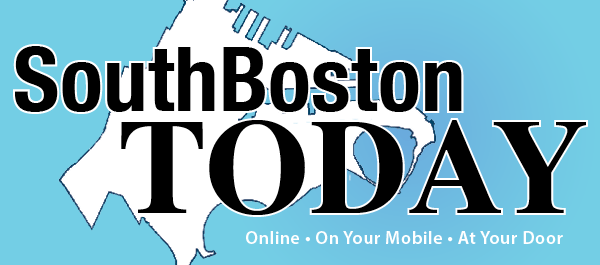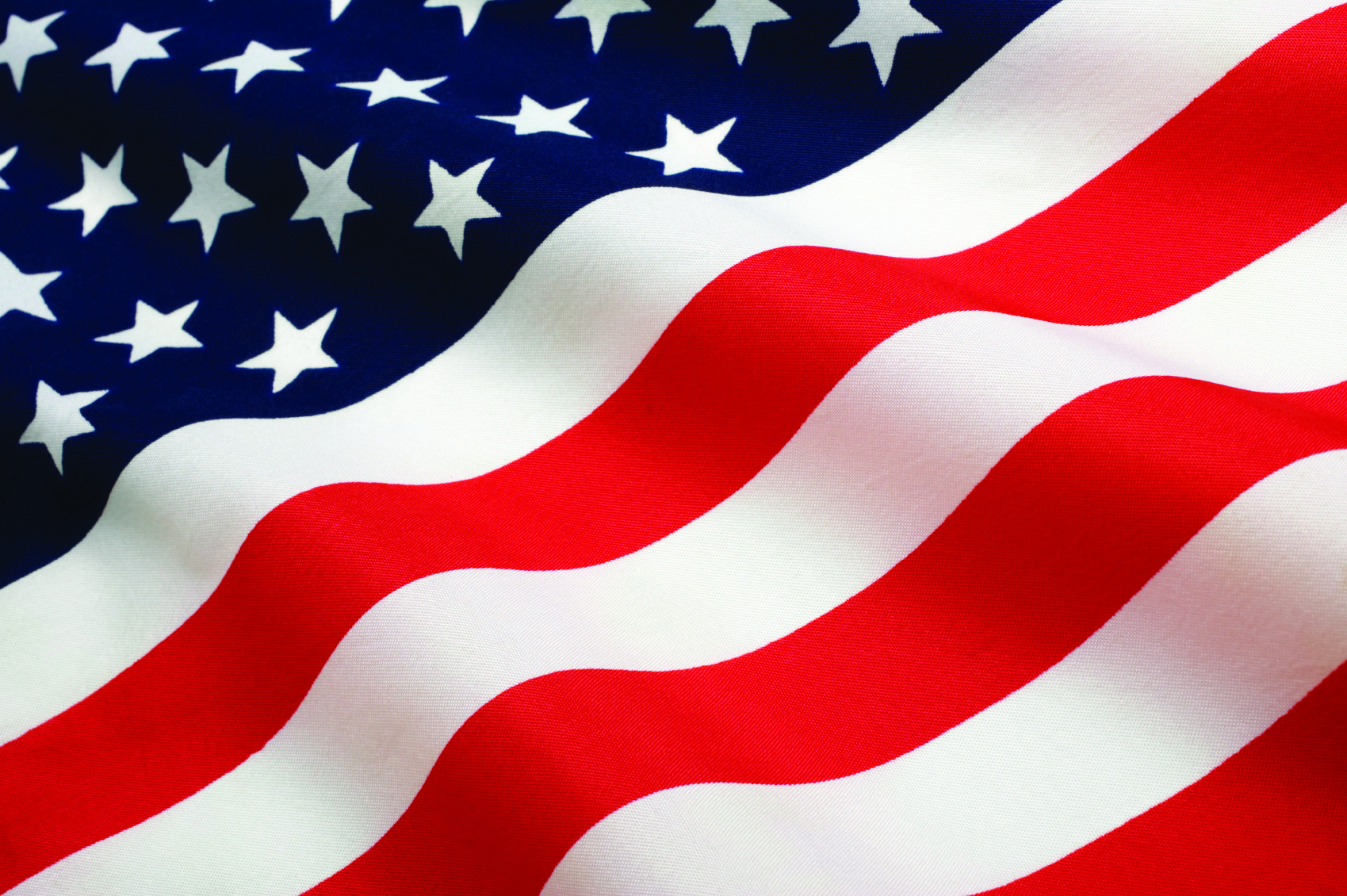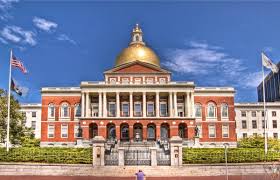 The late Brian R. Mahoney left an indelible mark on this community, especially in his devotion to our traditions, as both a veteran and civic leader. His chronicling of our history is immortalized through this newspaper. South Boston lost one of its favorite sons, suddenly and sadly just three short months ago. Please enjoy this three-part series about the history of Evacuation Day that Brian originally penned in 2011. It is only fitting that we honor his memory in the lead up to one of his fondest endeavors – THE PARADE.
The late Brian R. Mahoney left an indelible mark on this community, especially in his devotion to our traditions, as both a veteran and civic leader. His chronicling of our history is immortalized through this newspaper. South Boston lost one of its favorite sons, suddenly and sadly just three short months ago. Please enjoy this three-part series about the history of Evacuation Day that Brian originally penned in 2011. It is only fitting that we honor his memory in the lead up to one of his fondest endeavors – THE PARADE.
“Battle for Boston”
Brian R. Mahoney
(First Printed 2-10-2011)
Recently, while watching the History Channel series on the American Revolution, the episode of the evacuation of Boston was aired. The narrator summed up the event by intoning, “Thus the British woke up, surprised at the cannons positioned on the hill and evacuated the city without a shot being fired.”
South Boston Today, over the next 3 weeks, is proud to print the most complete and accurate account of this event ever produced. We are honored to remember and print for the first time in over 200 years, the names of the very first casualties in the history of the American Armed Forces. We are determined to do our duty and correct the historical record of Gen. Washington and the American Nations first victory.
 For most of its history, South Boston has always been identified as an Irish community. Growing up, I remember people jokingly calling it, “Ireland’s 33rd County”.
For most of its history, South Boston has always been identified as an Irish community. Growing up, I remember people jokingly calling it, “Ireland’s 33rd County”.
During most of its 200 plus year history, it has had a predominately Irish population. Those of us, who have grown up or live here, however, know that its merchants, athletes, scholars and leaders have always been drawn from every ethnicity under the sun. That same wide-ranging mix was present during the fortification of the “Heights” and is with us today.
The Battle for Boston is one of the most misunderstood and least appreciated acts of our American Revolution. Our story should probably start at the Battle of Bunker Hill in Charlestown. To paraphrase the British Commanding General Howe, “Many more victories like this and our army will be destroyed.”
The strategic importance of the Hills or Heights surrounding Boston had long been apparent before that bloody engagement. The arrogance and contempt the British held for their “Yankee Doodle” cousins, however, caused the British to underestimate the necessity of the prompt securing and fortifying of these Hills and Heights. Even after the Battle of Bunker Hill, South Boston (Dorchester Neck), was primarily grazing land for cattle and was sparsely populated by approximately 12 families.
Though they still didn’t occupy, the British became more aggressive and warlike toward the small South Boston population. A series of raids by the British over the next 8 months led to the capture of at least six rebel soldiers and the burning of houses and barns. Among the properties burned was the Wiswell Estate near “Bush Tree Hill (M Street Park), the Jones Estate at K and First Streets and Blake Estates near Farragut Road and the Foster property between F and D Streets. Combined with harassing fire from British held Castle William (Castle Island), South Boston was soon evacuated and left empty by the people. If it had remained that way, it is conceivable that our National Anthem today would be “God Save the Queen”.
Fate and destiny, however, had other plans for South Boston and America, Destiny’s Child in this tale was a Boston bookseller named Henry Knox. Knox, friend and advisor to General Washington, was commissioned a Colonel of Artillery in November of 1775. At the same time, the “Green Mountain Boys,” commanded by Ethan Allen, (and accompanied by a Massachusetts Colonel named Benedict Arnold) captured Fort Ticonderoga and its cannon. Located in Upstate New York, Ticonderoga is an Indian name meaning, “Between Two Lakes”. It is situated between Lake George and Lake Champlain up by the Canadian border. Washington needed its cannon for his plan and this was Knox’s mission. A mission, in the dead of winter, Knox was determined to accomplish.
So began one of the epic journeys in military history. With snow, sleet and howling winds, from Lake Champlain, over the Allegheny and Berkshire Mountains, through Great Barrington and Western Massachusetts, Col. Knox was able to transport these cannon, by oxen, through the roadless wilderness. Knox later wrote that the cannons had to be dragged up and over, “Mountains from which we might have seen all the kingdoms of the Earth.” Imagine driving those oxen through the icy wilderness wearing those heavy, soggy, frozen, woolen, revolutionary uniforms. 1775 was one of the coldest up to that time.
Toward the end of January 1776, Colonel Henry Knox was able to write to General Washington from Framingham that, “A noble train of artillery,” consisting of 59 pieces was ready to be turned over to the American Army at Cambridge. In late February, some 35 cannon were brought from Cambridge to Roxbury. Then, when March began, the cannon were brought from Roxbury to the area we now call Andrew Square.
Today, South Boston rises towards the middle and eastern end with large tracts of flat land on north and south coasts on the West End. Back then, the ocean on the south came up to almost Eighth Street. Moakley Park did not exist. It was water. On the north “A” Street met the Ft. Point Channel and the ocean came almost up to Second Street. Farragut Road was the shore between the ocean and Castle Island. The land itself had steep rises and deep gullies and had five points prominent above all others.
The first point is what we know today as the Dorchester Heights. Then it was actually two high points called the “Twin Hills”. Just behind Perkins Square, a long, sloping, rocky hill began its climb, reaching its high point around Dorchester Street and Emerson Street. This hill reached as far west as the City parking lot on West Broadway and it was known as “Leek’s Hill”. M Street Park, before it was flattened, was known as “Bush Tree Hill” and towered over the Harbor looking directly toward the British warships anchorage. At the extreme easternmost point, the land rose to about 40 to 50 feet above the ocean at what today is Farragut & Broadway. At that time, it was called “Dorchester Point”. Finally, all the way to the west at what is now “B” & West 3rd Street stood a hill probably topping at 125 feet known alternately as “Foster’s Hill” or “Nook Hill”.
These five hills or heights were the reason and the final destination of Knox’s miraculous journey. The difficulties of this journey are wonderfully depicted in the oil paintings adorning the walls of the former South Boston Savings Bank, now Bank of America. Stop in the bank and check them out.
Part II next week. Take care till next week.
Reading Between The Lines”
By Brian Mahoney
“The Heights”
The second of a 3-part series on the History of Evacuation Day
 The British conducted their last and most destructive raid into South Boston (Dorchester Neck) on February 13, 1776, burning houses and property of the Blake, Wiswell and Foster families among others. This time however, the Americans responded with 300 mounted troops, causing the British to flee in their longboats. It was this raid which seems to have been the final straw. Washington had been advocating for a frontal assault across the ice from Cambridge and Roxbury. His military council disagreed and after his final council of war on February 26, Washington wrote, “I am preparing to take a position on Dorchester Heights to see if the enemy will come out to meet me.” He had reversed course and decided the Americans would fight from fortified positions and force the British to make the frontal assault.
The British conducted their last and most destructive raid into South Boston (Dorchester Neck) on February 13, 1776, burning houses and property of the Blake, Wiswell and Foster families among others. This time however, the Americans responded with 300 mounted troops, causing the British to flee in their longboats. It was this raid which seems to have been the final straw. Washington had been advocating for a frontal assault across the ice from Cambridge and Roxbury. His military council disagreed and after his final council of war on February 26, Washington wrote, “I am preparing to take a position on Dorchester Heights to see if the enemy will come out to meet me.” He had reversed course and decided the Americans would fight from fortified positions and force the British to make the frontal assault.
On the morning of March 2, the Americans opened a three-day bombardment of the British in Boston. Under an advance protective screen of 800 infantry, 2,000 artillery men began their stealthy advance into South Boston. With muffled horses’ hooves and wagon wheels, this column began to snake its way up the “Turnpike” (Dorchester Street). Reaching the area of today’s “Telegraph Street”, nine cannons for three artillery batteries were muscled up to the peak of the “Twin Hill.”
The column continued up the “Turnpike” until it reached today’s Perkins Square area. There, a sloping hill began to rise, extending west toward the West Broadway parking lot and north toward Dorchester Street and Emerson Street. This hill was known as “Leek’s Hill” and was designated for 7 cannons. Emerson Street, the second of South Boston’s original remaining streets, was called the “way to the Castle” and extended all the way to the east shore (Farragut Road). The column moved on this road to roughly “M” & East Fourth Street. At this point, six cannons were dragged up to “Bush Tree Hill” where their muzzles towered menacingly over the British warships at anchor. The last leg of the eastern march ended at Dorchester Point where a single three-gun battery was placed.
Back at “Leek’s Hill”, 700 men and 10 cannons skirted the western base and followed “Plaski Ave.” to West Third Street. This third and final road was known as the “Way to the Nook.” This road reached, straight as an arrow, to the 125 foot high “Nook Hill” located at today’s “B” & West Third Street. This hill was closest to British positions and warship anchorage so presented the most danger to the British. At the same time, its nearness made it the most exposed to British fire. It was decided by the Americans to fortify this hill last.
The cannon’s movement and the actual construction of their fortifications was a master stroke itself. Besides wrapping hooves and wheels in rags to muffle sounds, the Americans took a number of pre-emptive measures that led directly to victory.
The crossing into the “Neck” would have been under the eyes and guns of the British, particularly the “Green” artillery position located on a rise at today’s Berkeley and Washington Streets intersection. The American created a “Blind” or a wall that would cover their movements by twisting and weaving hay. This was called “Screwed Straw”. Washington, for weeks, had his troops out in the “Wilderness” of Dorchester collecting thin tree branches and kindling. This was used to build “Fascine” or walls around cannon positions; usually by digging a trench and combing dirt and branches to make those protective walls. The frozen ground plus the need for secrecy made digging impossible. The solution was called, “chandelier”. These were simply 10 by 4 foot skeletal wooden tubs. Light, mobile, easily moved into position around the cannons, filled with the “Fascines” and immediately turned into sturdy defensive walls.
During the next three days, the men labored to erect defenses while the non-stop bombardment of Boston provided cover their actions. A bombardment so fierce that famed jurist, Oliver Wendell Holmes, later wrote and spoke of it in a childhood memory. As a Boston schoolboy in the 1850’s, Homes recalled passing everyday by a house which still has “cannonball embedded in its chimney since that barrage”.
Over the centuries, Americans have been stirred to the defense of their country, in part by words identifying their cause. “Remember 911” is most recent. Before that it was “Remember Pearl Harbor”. Earlier, “Remember the Maine”. Still earlier, “Remember the Alamo”. It was on the “Heights” that call to battle was first used as General Washington walked among the troops exhorting them to “Remember the Men of March the Fifth”. Speaking of course, of the “Boston Massacre” six years earlier.
Upon awakening on March 5, 1776, General Howe first noticed the silenced cannons. Next, across the harbor, was the astonishing sight of the “Heights” bristling with troops and cannon from four positions. He then made his famous statement, “These men have done more work in a night than mine could do in a month.” Undeterred, Howe immediately drew up plans to attack across the harbor and dislodge the Americans from the Heights. All day, Boston was the scene of increasing alarm as British troops hustled about preparing for battle. Longboats were brought from the warships to ferry the troops for the assault and tied up at “Long Wharf”. By late afternoon, 2,400 troops were lined up at the foot of “Long Wharf”, today’s Purchase Street.
Stay tuned next week for the final chapter.
In the meantime, please remember public drinking is illegal.
A number of “Family Zones” have been created throughout the parade route and will be listed today and next week. Please ask your guests to respect the celebration, the town, and themselves and refrain from “Mardi Gras” type actions. Folks have worked diligently for a year to provide a safe, fun day that can be enjoyed by all.
Take care till next week.
Reading Between The Lines
“The Battle”
The third of a 3-part series on the History of Evacuation Day

Experience has taught us in Boston that rain, sleet, snow, gale force winds and freezing temperatures that arrive sometimes in February and March are known as a “Nor’easter”. Unaccustomed, The British could only equate this phenomenon to as “Hurrycane”.
The British plan was to cross to Castle William (Castle Island), assemble, and then assault across at “Dorchester Point”. Instead General Howe later wrote a “Hurricane” had forced the cancellation of the assault ‘in the fear they would all be lost” due to the weather. The same storm that drove the British indoors was used by the Americans as a fortuitous opportunity to strengthen their defenses, so that when the storm abated by noon on March 6, the British realized their chance to assault had passed. Undeterred, a squadron of warships weighed anchor and with sails full attempted to close on the North Shore (First Street). The looming Heights of the “Bush Tree” Hill forced the British to attempt a dangerous maneuver.
Shifting nearly every cannon to one side of the ship, the British intended this would allow the few cannons remaining on the other side to gain enough elevation to strike the American position on “Bush Tree”. This rarely used tactic carried the danger of swamping or even capsizing the ship. The North Shore at the time was riddled with inlets, barely submerged mud flats, and deepwater channels. This unpredictability, plus the batteries at “Bush Tree” and “Dorchester Point”, made the danger of grounding a ship under American guns too great to allow the British ships’ cannons to continue firing and this action was halted.
At “Dorchester Point” the Americans were giddy at the British ships retreat. They began waving flags, gesturing, and generally taunting the British Troops at Castle William (Castle Island). The British at the castle had fired but found the range prohibitive. To counter this, the British attempted a double load of powder. Unfortunately this caused cannon to explode killing and wounding several British. That ended the day’s events and on March 7 an unspoken truce seemed to be in place and the British began making preparations to pack up.
On March 8 the intently watching Americans were dismayed to observe and receive reports that the British efforts toward withdrawing had turned into looting and destruction. It was then Washington played his final card. With sunset the Americans, who had kept their last 10 cannons behind the base of “Nook Hill” at “C” and 3rd Street, began the construction of the final and closest battery. Late into the night the American troops labored. Then, perhaps due to overconfidence, a soldier lit a fire for warmth.
Almost immediately the British “Green” Battery (at Washington and Berkeley Streets), alerted to their location, began a deadly fire. A company of the 10th Artillery Regiment under Captain Thomas Pierce continued to work under this withering fire. This unfinished position attempted to return fire. A 17-year-old Private, Stephen Jennings of Norton, dashed back and forth bringing powder to the cannons. It was during one of these runs he was felled by a bursting shell. Watching this was 25 yr old Sgt. Obadiah Adams from Littleton and 33 yr old Surgeon Enoch Dole from Lancaster. Along with two other soldiers, they grabbed a litter and ran to aid Jennings. Sadly, as all four gathered round his fallen form, yet another British shell exploded, killing all four of the rescue party. Ironically, the act of aiding and hovering over Jennings, by the four, shielded him and he survived with the loss of a hand and eye. The firing continued all night, ending at sunrise after over 800 cannon balls had been fired and the American abandoned the fortification attempts
This action seems, at least initially, to have prompted the British to cease the town’s destruction and continue the evacuation. Still by the morning of the 14th Washington had tired of the British stalling tactics. He was well aware more troops had already sailed from England. In any event, Washington was spoiling for a fight. “If the enemy will be kind enough to come out for a fight, I mean to give them one” he stated. In full view and in broad daylight, the very place that the very first soldiers of this new army, of this new nation, under this new commanding General had given the “last full measure”, he ordered to be fortified.
By late afternoon on March 16th, this final and most ominous position was completed. The next day, March 17th, the last British ship cleared Boston Harbor by noon as American troops entered the city. These troops discovered the final contempt of the British who had looted and used churches and meeting houses cavalry stables. In fact, in violation of the cease fire, they set Castle William ablaze as they left. Washington, expecting English treachery, placed in command as Officer of the Day (O.D.) General John Sullivan of County Wexford and made the password “St. Patrick”. So in effect the great British Empire surrendered their first American Colony to an Irish Catholic. This would probably be comparable to a former plantation slave owner working and taking orders under former African slave. “Those that laugh last, laugh best.”
How did this action, without which, arguably, the revolution would have failed, become a footnote in history? Would the Revolution have survived without their secure base in Boston? The British successfully moved in and occupied New York, New Jersey and Philadelphia. Over the next year, the only other American victory was the Christmas raid at Trenton, so how did the victory at Boston become so overlooked?
When the British fleet sailed away on that St. Patrick’s morning, they left behind their hatred of the Irish and Catholics that remains with us in some form and by some people to this day. Consider that the battle occurred 240 years ago but for the first 130 years it was never observed. This is only the 114th observance. The ruling political elite were determined to keep the Irish in their place, but the joining of St. Patrick’s and Evacuation was seen by the Irish, as divine intervention.
That and the flood tide of Irish Immigration swelled their ranks to political power. Prior to that, every undesirable activity was placed in South Boston by the ruling elite. The poor house and insane asylum were placed in South Boston. Except for the “Twin Hills”, all of our “Heights” were leveled to fill in the Back Bay. A 45 acre park created for South Boston residents was first re-claimed by the Government as a military base and is now site of the Convention Center. When the Dorchester Heights Monument was dedicated in 1902 the guest speaker referred to the longstanding discrimination toward the Irish South Boston by noting “The Mayflower and the Shamrock have finally joined”. Even then St. Patrick could only be celebrated under the umbrella of Evacuation Day.
Yet, even today, a simple parade to honor the military birth of America and our cultural heritage is constantly under attack, No where else and no other parade is singled out to be the target of others’ political agenda. Not a single court in Massachusetts had the courage or honesty to give us the right that was so obvious the U. S. Supreme Court upheld it unanimously. 9-0!
I have a framed sign in my house. It was printed AFTER my mother was born. It reads “No Irish Need Apply”. As we watch officially sanctioned assaults on our parade and us continue, it’s obvious that some things haven’t changed all that much. Still, here we stand and will always stand. Celebrate with pride.
Happy Evacuation and St. Patrick’s Day.
Take care until next week.









